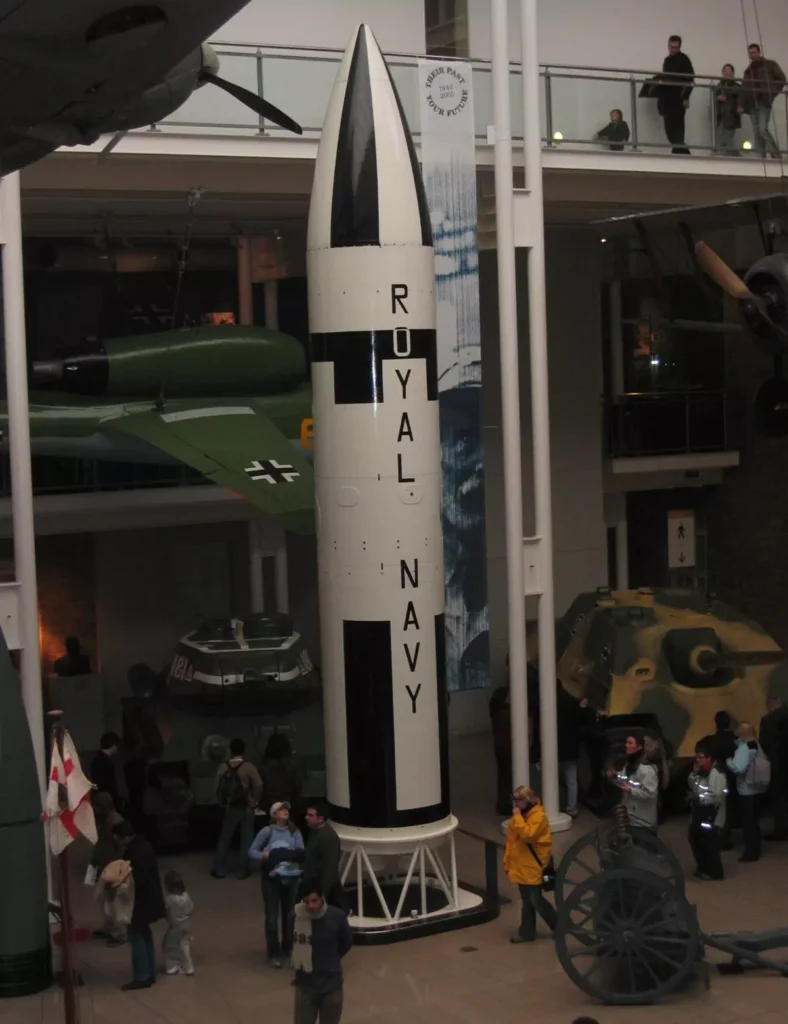Introduction
The Polaris A-3 Submarine-Launched Ballistic Missile (SLBM) stood as the ultimate Polaris missile, ultimately giving way to its more voluminous successor, the Poseidon C-3 missile.
Distinguished from its predecessors, the A-3 boasted an increased range and a novel approach to warhead delivery—the multiple reentry vehicle (MRV) system.
This feature enabled the scattering of three nuclear warheads over a single target area, effectively compensating for limitations in missile accuracy and thereby broadening the radius of destruction against less fortified targets. Notably, the A-3 was the sole U.S. strategic missile deployed with MRV warheads.
| Polaris A-3 SPECIFICATIONS | |
|---|---|
| Length: | 32 ft (9.7 m) |
| Diameter: | 4 ft. 6 in (1.37 m) |
| Weight: | 36,000 Ibs (16,329 kg) |
| Speed: | Supersonic; |
| Range: | 500 (926 km) - 2,500 n.miles (4,630 km) |
| Accuracy: | 3,000 ft (900 m) C.E.P. |
| Propulsion: | 2-stage solid propellant |
| Guidance: | Inertial |
| Warhead: | 3 x MIRV W-58 nuclear (200 KT) |
| Main contractor: | Lockheed Missile and Space Coorporation (now Lockheed Martin Space Systems, Missile and Space Operations, Sunnyvale, California) |
Check a more complete specification here: Polaris A-3 Missile Technical Specification.
Beyond its role in the U.S. Navy, the Polaris A-3 also held strategic importance for the United Kingdom, serving as the cornerstone of its deterrent capabilities. These British A-3 missiles, produced in the United States by Lockheed, were equipped with a British-manufactured warhead. This original design later underwent an upgrade to the Chavelin A-3TK variant. Consequently, the A-3 not only replaced the manned bomber in the UK’s strategic deterrence framework but also fostered international collaboration in missile technology.
Description
Design
The Polaris A-3 missile with an 85% new hardware composition compared to its predecessor, represented a quantum leap over the Polaris A-2, and by extension, the A-1.
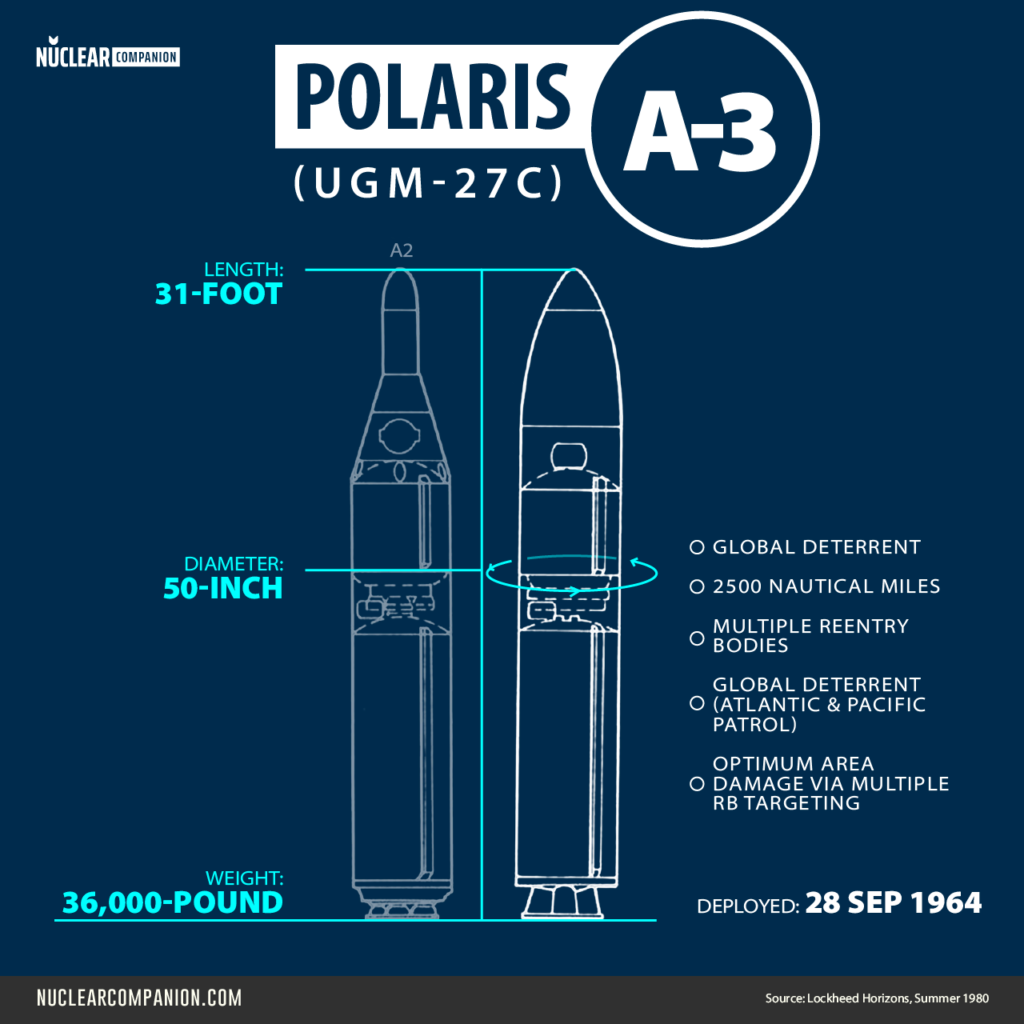
The A-3 was devised to achieve a 60% range extension while maintaining comparable weight and dimensions to the A-2. This formidable increase in range, soaring to 2,500 nautical miles, was accomplished through a reduction in structural and component weight and the introduction of new solid propellants in its two-stage motor. Both stages of the motor employed fiberglass casings, a material selection that substantially reduced vehicle weight.
Externally, the A-3 showcased an evolved aesthetic, featuring a constant circular cross-section along its length, juxtaposed to the A-2’s large and small diameter cross-sections. This design shift did not compromise its dimensions, as its overall length increased only by 15 cm, settling at 9.55 m, while the diameter and weight remained constant at 137 cm and 13,600 kg, respectively.
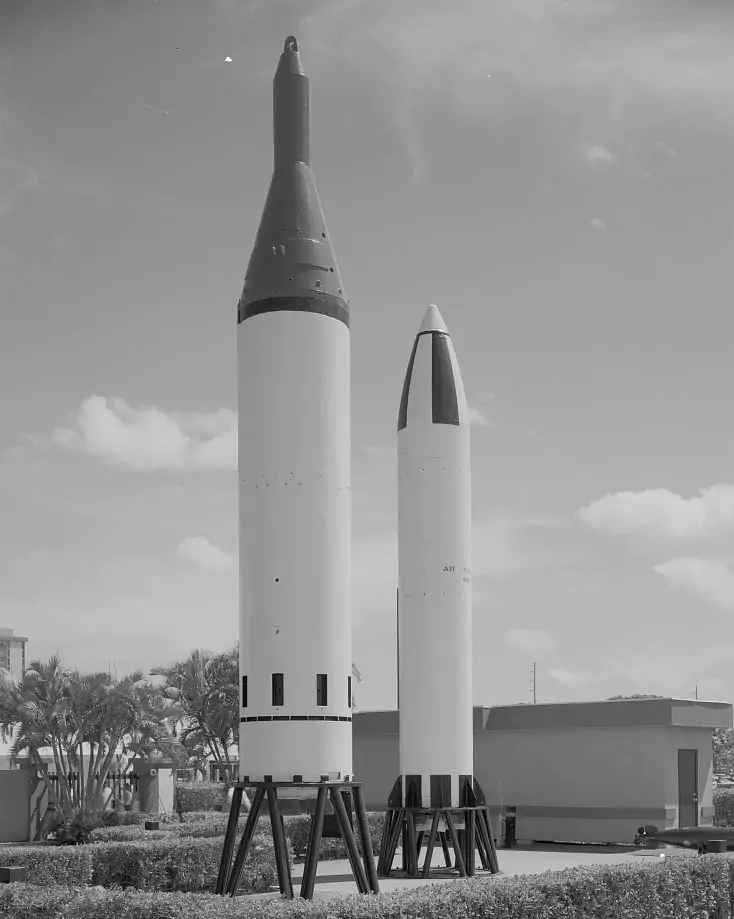
The reconfigured design and reduced weight of the Polaris A-3 granted the Navy an Intermediate-Range Ballistic Missile (IRBM) capability, superior to the Air Force’s Thor and Jupiter missiles. Notably, this advanced missile could be launched from submarines stationed in the North Atlantic, yet still reach targets within the Soviet Union, owing to its enhanced 2,500-mile range.
Adding a new dimension to its arsenal, the A-3 was equipped with multiple warheads, each with a 200-kiloton yield. This multi-warhead feature rendered it more resilient to interception by anti-ballistic missiles. The strategic deployment of these warheads in a spaced pattern meant that even a nuclear-armed ABM could only neutralize one warhead, thus maintaining the missile’s destructive capacity.
The urgency for these capabilities was so palpable that President Kennedy, in 1961, accelerated the A-3’s development timeline by a year, concurrently reducing the number of A-2 missiles purchased. The A-3 thus emerged as a revolutionary milestone, both in terms of its technical specifications and its strategic implications.
Guidance
The Polaris A-3 missile featured an improved guidance system, known as the Mk. 2, which was developed through a collaboration between MIT, General Electric (GE), and Raytheon Corp. First flight-tested on A-2 missiles in November 1961, the Mk. 2 weighed only about one-third of its predecessor, the Mk. 1, and its dimensions were roughly halved.
The electronics package underwent a substantial size reduction, accounting for nearly half of the weight and size savings. With its three-dimensional welded modules produced by Raytheon, GE took on the responsibility of manufacturing the system.
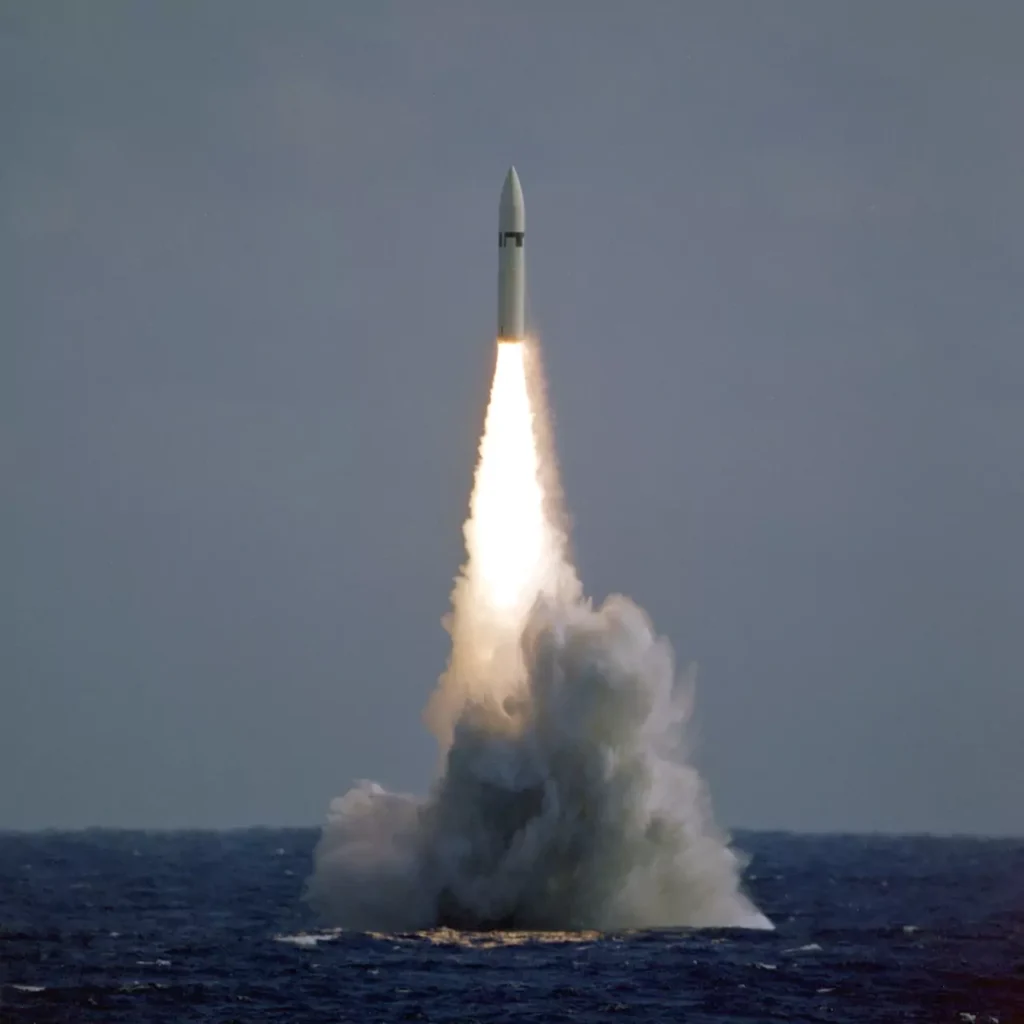
The Mk. 2 was equipped with a state-of-the-art gyroscopic-type accelerometer, utilizing an electromagnetic device called the ducosyn. This new device integrated gyro suspension and signal or torque generation, tasks previously managed by separate mechanisms. Additionally, the system employed two pulsed integrating pendulum accelerometers, a new type designed by MIT. The gimbals package in the Mk. 2 was shrunken to roughly the size of a basketball, and the gyros themselves were about the size of tennis balls.
Propulsion
The improvement in range beyond the A2’s 1500 miles was achieved by lowering the missile’s inert weight and enhancing both the quantity and efficiency of the propellant. Additionally, the launcher system’s robust shock protection gave assurance that a heavier missile could be supported.
Aerojet Corporation designed and constructed the first-stage rocket motors, while the Hercules Powder Company was responsible for the second stage. Both manufacturers employed advancements in material sciences and engineering techniques to improve the missile’s performance.
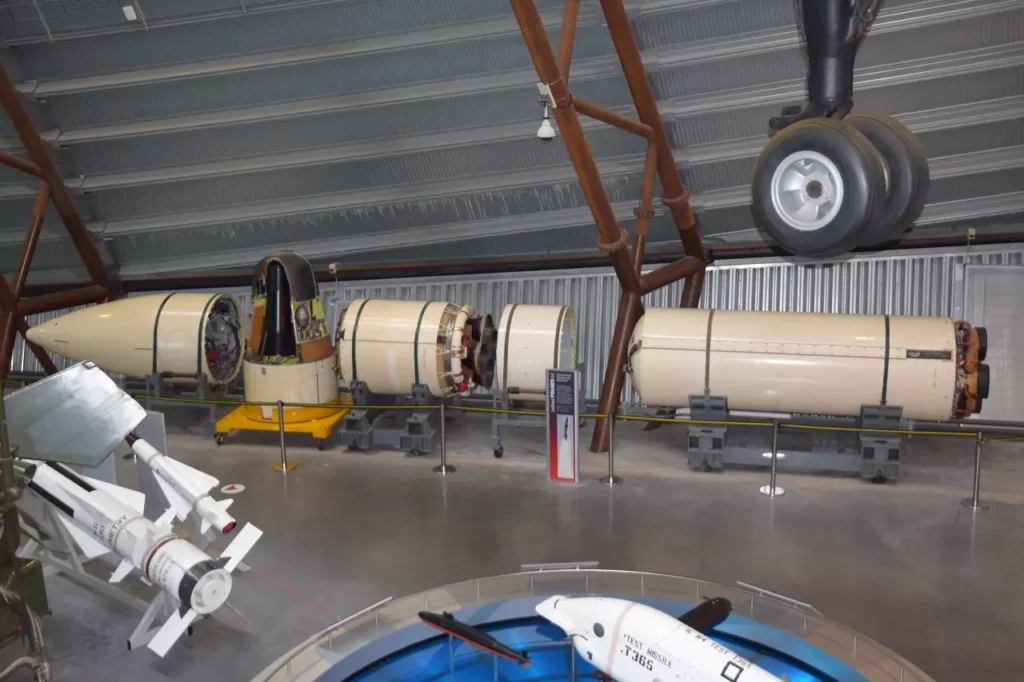
In the first stage, one of the principal changes was the shift from steel chamber material to high-strength resin-impregnated glass roving. This change was pivotal in reducing the inert weight of the missile, thereby aiding in the increase of its range.
The first-stage thrust vector control system was revised to include rotatable nozzles, while the second stage adopted a new method of fluid injection for thrust vectoring. This innovative approach to thrust vector control, involving the injection of Freon into the nozzles, was first successfully tested on September 29, 1961, during the second stage flight of A1X-50.
Propellants also improved. The formulations were changed to those with higher specific impulse and density, thereby increasing both the amount and the efficiency of the propellant. The new propellants generated temperatures exceeding 6000°F and pressures between 800-900 psi.
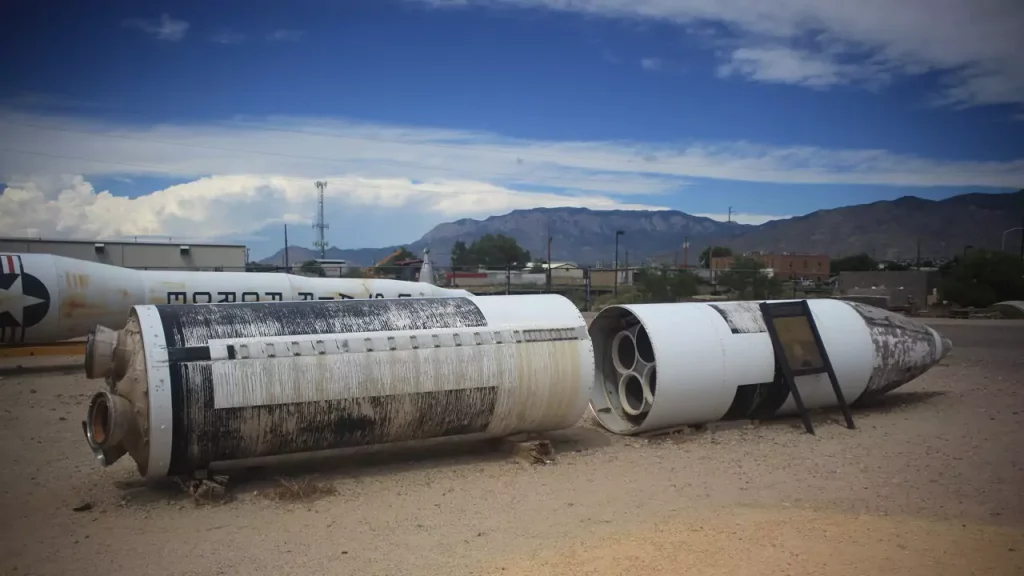
While these conditions improved the missile’s performance, they also posed challenges, particularly in the development of the first-stage nozzle. The extremely high temperatures and pressures required a solution that could withstand such harsh conditions. The final design employed silver-infiltrated tungsten nozzle throats, solving one of the most challenging propulsion problems encountered during the development phase.
Despite these advancements, the higher temperatures led to complications. The composite propellant developed by Aerojet was more corrosive compared to the double-base propellant used by Hercules and the Allegheny Ballistic Laboratories in the second stage. In initial tests, the first-stage nozzles were destroyed, necessitating a decrease in the propellant burning temperature. This change required the use of more substantial nozzles and resulted in a slight reduction in range, by approximately 90 nautical miles.
Payload & Warheads
The Polaris A-3 missile’s most marked difference compared to its predecessor, the A-2, was on its Payload.
Originally, the Polaris A-3 was envisioned to carry a single 1 MT (Megaton) thermonuclear warhead, akin to the payload of the A-2. This plan took a significant turn with the development of Multiple Re-entry Vehicle (MRV) technology, leading to most operational A-3s being fitted with a 3 X 200 KT (Kiloton) MRV warhead system.
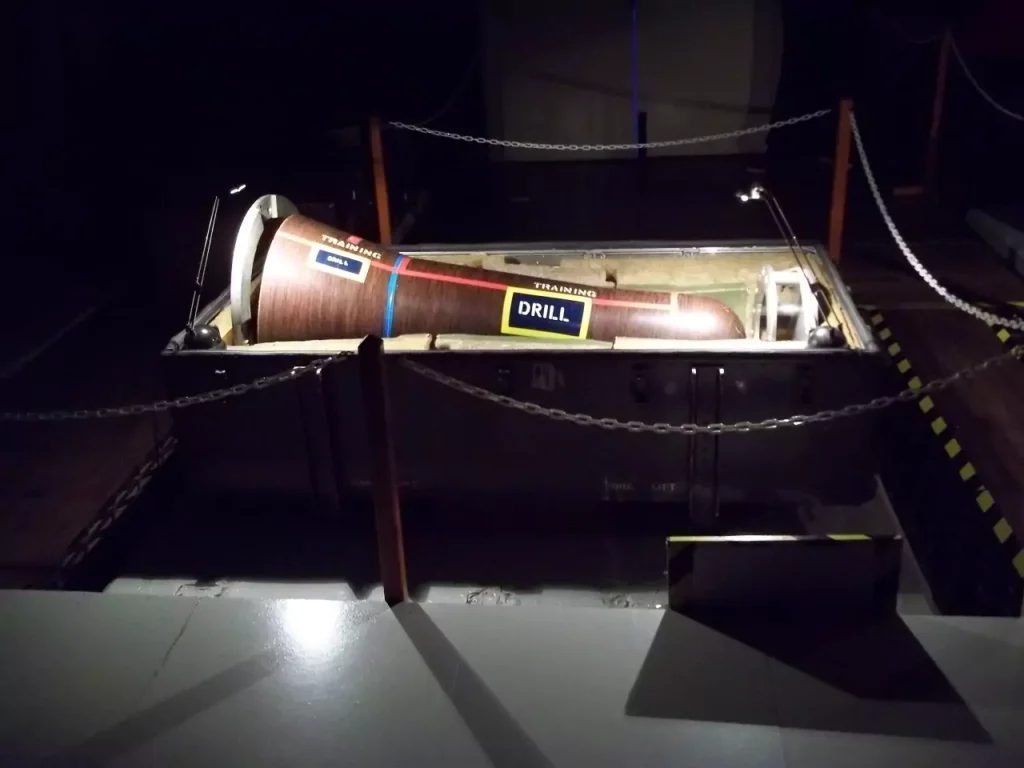
The MRV technology was the most pivotal change in the A-3’s design, enabling it to carry a cluster of three separate re-entry vehicles (RVs), each containing a nuclear warhead. A new 200 KT nuclear warhead, known as the W-58, was specifically developed for this MRV system. After booster burnout, these RVs would mechanically separate from each other and gain additional velocity, resulting in a triangular impact pattern around a central target.
Incorporating the first operational MRV altered the missile’s combat efficacy by widening the lethal blast area and complicating Anti-Ballistic Missile (ABM) defenses. This approach, while not effective against multiple hardened targets, was considered adequate for softer objectives.
With a maximum range of 2,500 nautical miles, the A-3 could carry a payload of 1,347 pounds. This payload had the flexibility to include either three already mentioned U.S. Navy Mk 2 RVs weighing a total of 1,100 pounds, or three U.S. Air Force Mk 12 RVs along with penetration aides. The latter configuration, however, was never deployed in practice.
Development
The journey towards the Polaris A-3 missile’s development started as early as February 1959, initially named Polaris C by the Special Projects Office (SPO). For a brief period between May and August 1960, there was consideration for developing a variant called Polaris A2A, incorporating elements of the A3. This variant was slated for operational availability in July 1964. However, it was eventually decided to bypass this step and directly move on to the development of the A-3 missile.
The backdrop for this decision lay in the incremental progress made during the A-1 testing phase. Lockheed, the contractor, had unearthed several crucial design enhancements. Yet, due to the pressing timelines, these improvements could not be integrated into the Polaris A-2. Consequently, in September 1960, the green light was given for the development of the Polaris A-3 missile.
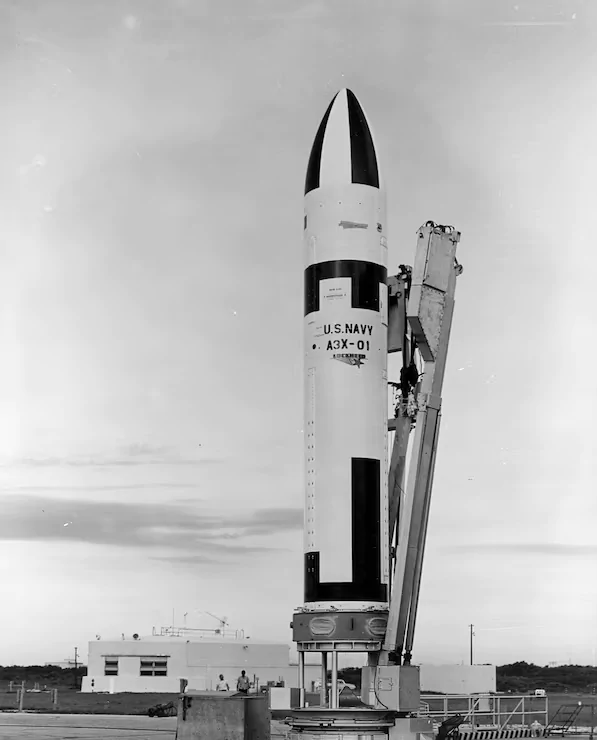
Initial steps involved launching a series of experimentally modified A-2 missiles, commencing in late 1961. These launches aimed to test new subsystems and equipment designed explicitly for the A-3 version. It was not until the seventh launch that a successful flight of the new A-3 was confirmed. A comprehensive regimen of static and ground tests helped diagnose and rectify specific issues between each launch.
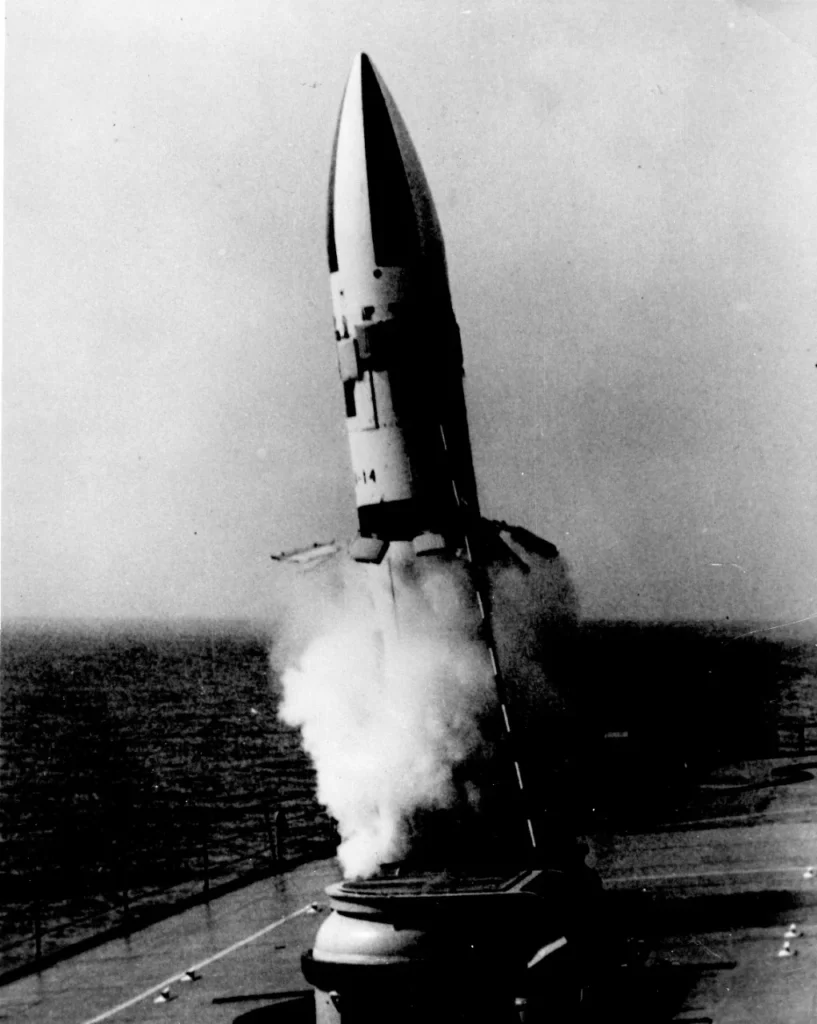
The Polaris A-3 went through its first flight test on August 7, 1962, at Cape Canaveral. Despite some setbacks, each minor in nature, a full success was only realized on the seventh flight test. Again, extensive ground tests helped pinpoint hardware malfunctions, confirming the viability of the A-3’s basic design. Accelerated progress was made with the A3X-18, a production prototype, showcasing many production-configured components. In June 1963, the A3X variant was successfully tube-launched at sea from the USS Observation Island (EAG-154).
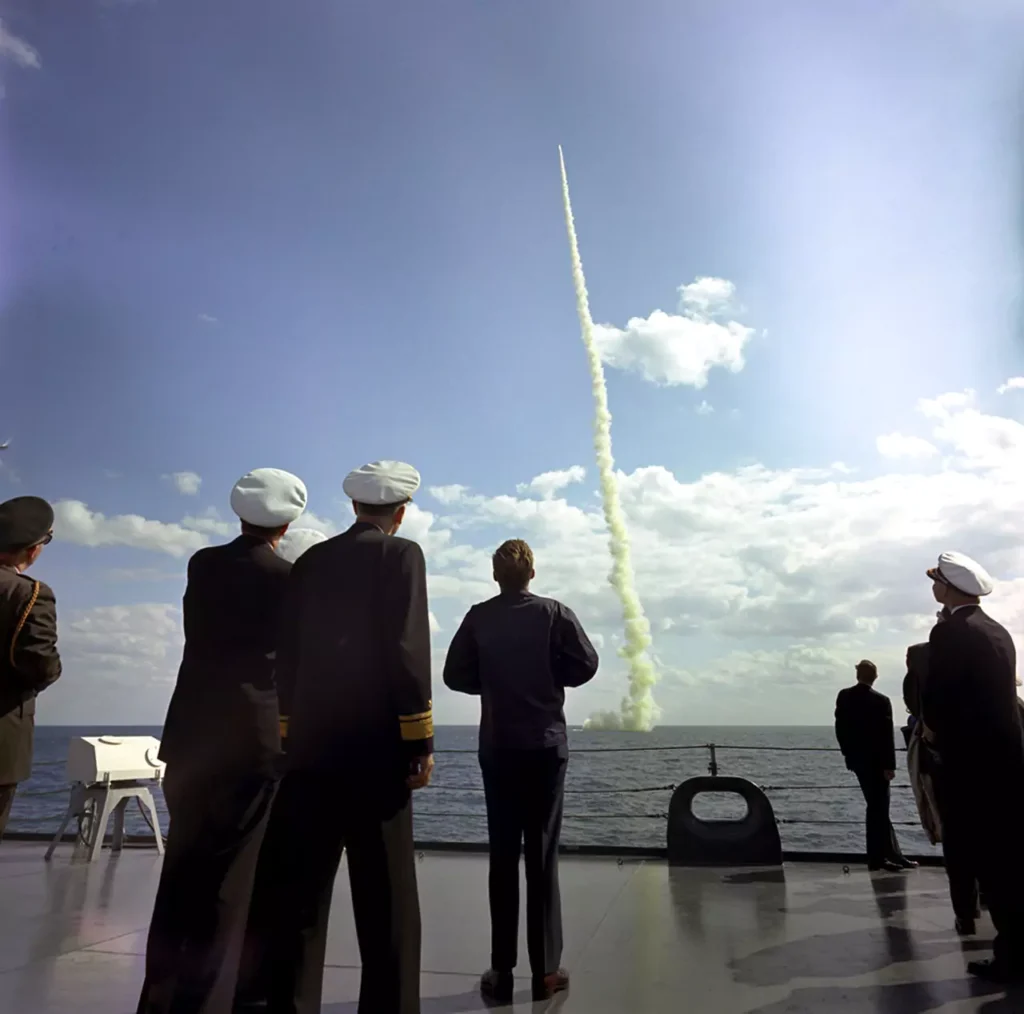
The momentous first tube-launching of an A-3 missile from a submerged submarine occurred on October 26, 1963, executed by the USS Andrew Jackson off Cape Canaveral. Operational entry into the U.S. Navy came about in September 1964.
Operative Service
The Polaris A-3 missile became part of the U.S. Navy on September 28, 1964. On this day, the USS Daniel Webster started its first patrol with 16 A-3 missiles.
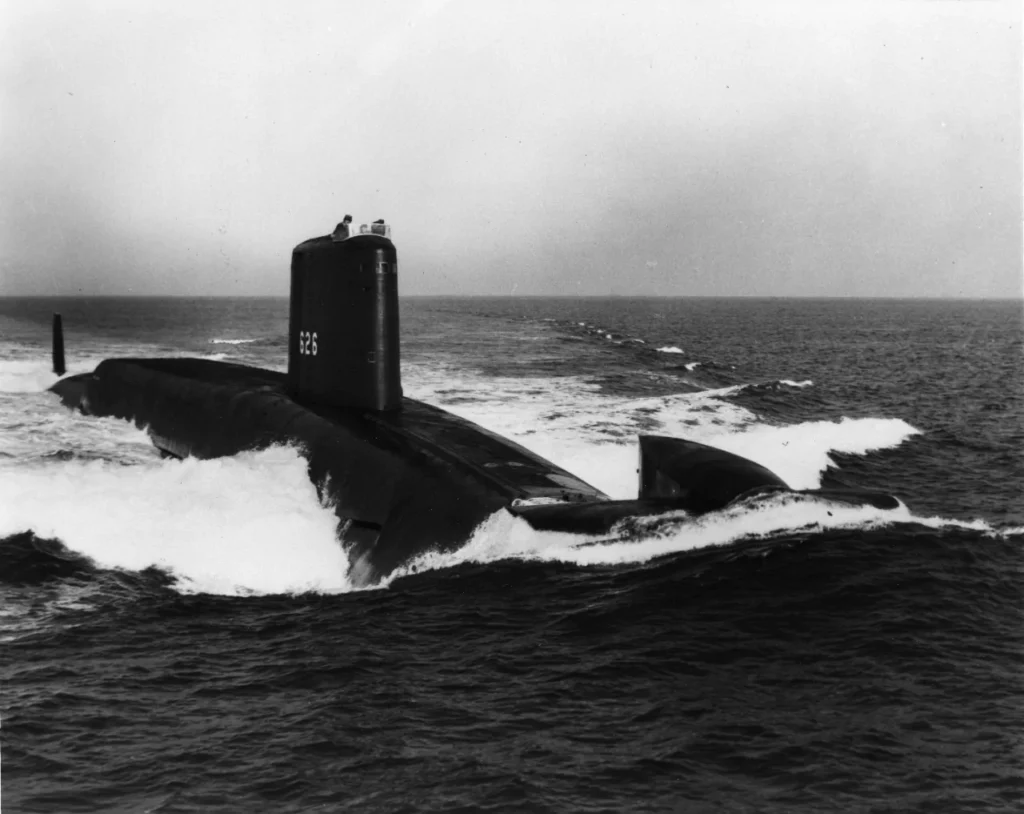
Out of 41 U.S. ballistic missile submarines, 23 Lafayette class submarines were originally fitted with the A-3. Both George Washington and Ethan Allen classes were later refitted with the A-3. Work on the George Washington class started on January 1, 1965, and the last A-3 missile was loaded on July 7, 1965.
The UK also used the A-3 missile. Their first patrol started on June 22, 1968, with the HMS Resolution.
As the A-3 was being tested, a new missile called Poseidon C-3 was in development. This led to the production of the A-3 being ended in June 1968. Poseidon started replacing the A-3 in the Lafayette class three years later.
In 1974, the A-3 became the only Polaris model still in use as the A-2 was retired.
By 1977, only George Washington and Ethan Allen class subs still had the Polaris A-3. This left 31 Poseidon subs with 496 launchers and 10 A-3 subs with 160 launchers.
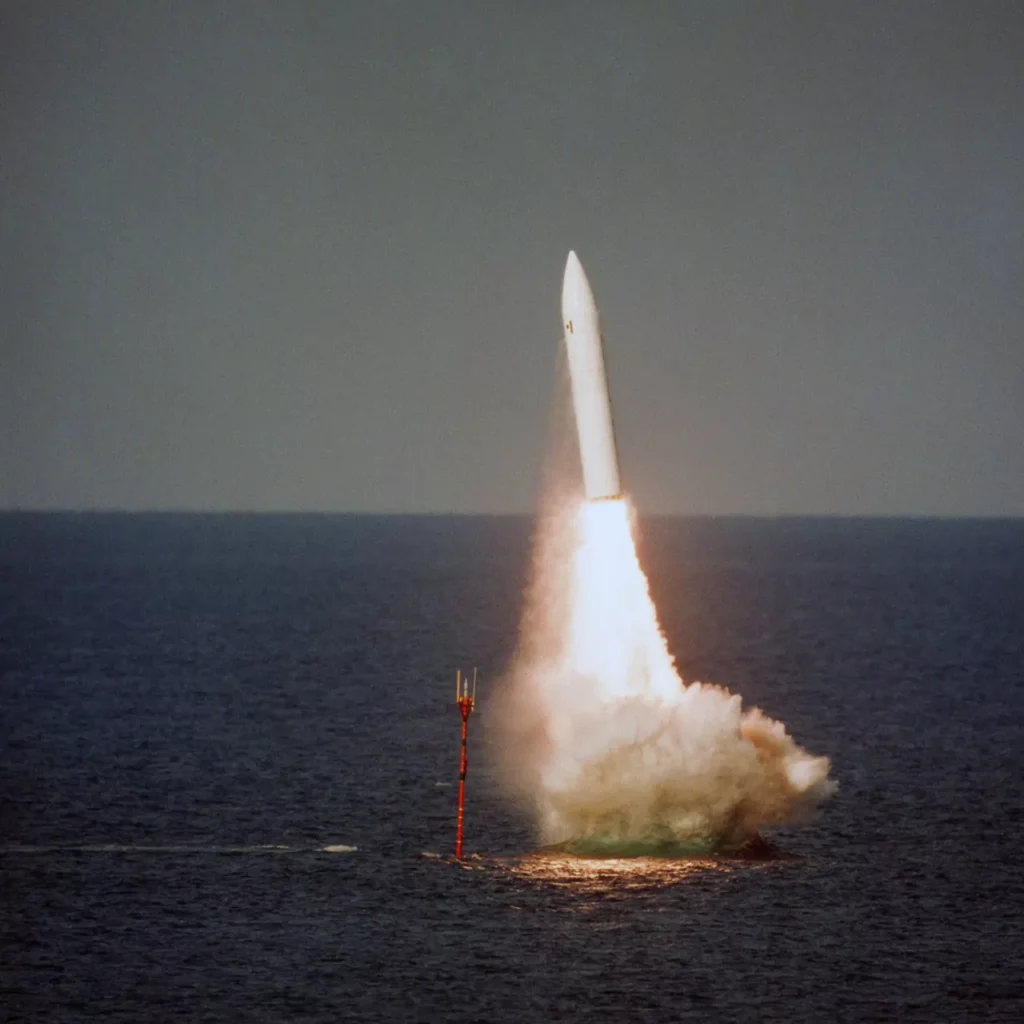
The last A-3 patrol in the U.S. was by the USS Robert E. Lee on October 1, 1981.
In the UK, the Trident replaced the Polaris in 1994. The last A-3 patrol was on May 13, 1996, by the HMS Repulse. In total, the A-3 was operational in 41 U.S. and 4 British submarines.
Variants
A3P
Initial variant deployed on submarines.
A3E
Version employed for operational tests and performance demonstrations.
A3T “Topsy”
The Polaris A3T missile emerged as a critical modification to the original A3 variant, embodying advances in electronic hardening. This hardening was part of a program codenamed ‘Topsy,’ which sought to fortify the missile against nuclear defensive intercepts. It should be noted that the hardening was selective; while the guidance system was hardened, the re-entry system was left unaltered. By the late 1960s, all deployed Polaris A3 missiles in both the United States and the United Kingdom were transitioned to the A3T configuration.
A3TK “Chevaline”
In 1982, the Polaris A3TK, also known as the Chevaline missile, replaced the A3T model in UK submarines. This variant was a highly specialized UK modification designed to bypass the Soviet Union’s antiballistic missile defenses surrounding Moscow. Originally conceived from a discontinued U.S. program called Antelope, the “Super Antelope” improvement program was renamed to “Chevaline” in 1974.
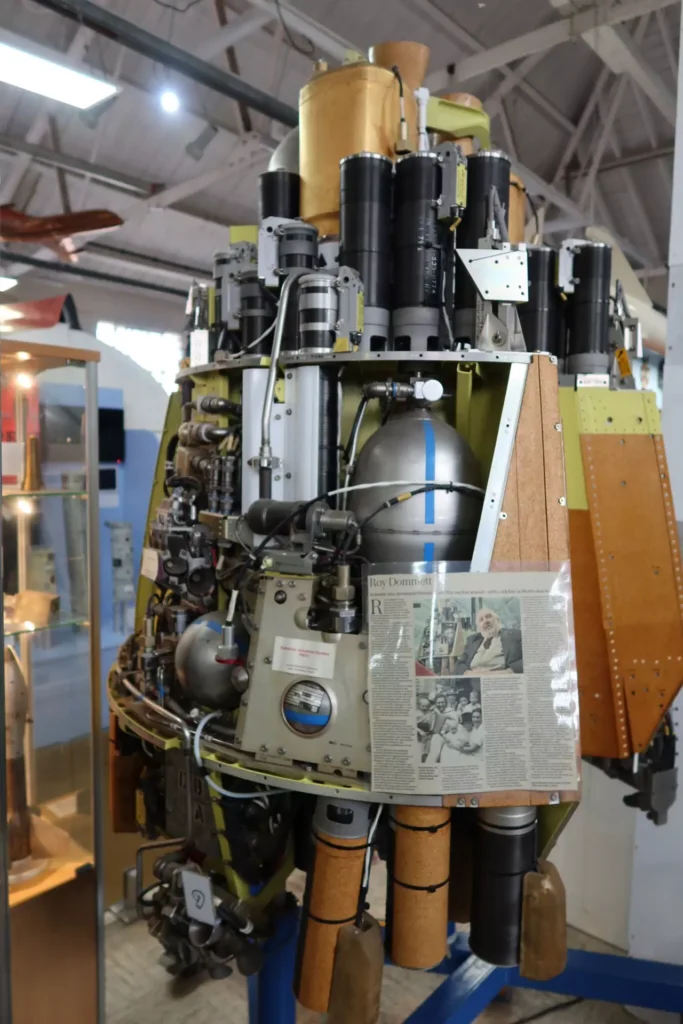
The A3TK’s payload included two new radiation-hardened warheads with an estimated yield of 200 kilotons each, as well as a Penetration Aid Carrier (PAC). The PAC replaced one of the existing three warheads and incorporated advanced penetration aids, including decoy warheads and electronic jammers, to thwart Soviet missile defenses.
These modifications did come at a cost; the increased weight resulting from the PAC and new warheads diminished the missile’s range. Consequently, this restricted the operating radius of the UK’s Polaris submarines. Despite these trade-offs, the Chevaline system was an essential asset until it was phased out in 1996.
More about Polaris A-3
Further reading
- United States Submarine-Launched Ballistic Missiles (SLBM)
- Polaris A-1 (UGM-27A)
- Polaris A-2 (UGM-27B)
- Poseidon C-3 (UGM-73)
Bibliography
- Nuclear Weapons of the United States: An Illustrated History by James N. Gibson, 1997
- The U.S. Nuclear Arsenal: A History of Weapons and Delivery Systems since 1945 by Norman Polmar Robert & S. Norris, 2009
- Jane’s Strategic Weapons Systems, Issue 38, Jane’s Information Group, UK, 2003
- The Fleet Ballistic Missile System: Polaris to Trident by R. A. Fuhrman, 1978
- From Polaris to Trident: The Development of US Fleet Ballistic Missile Technology by Graham Spinardi, 2008
